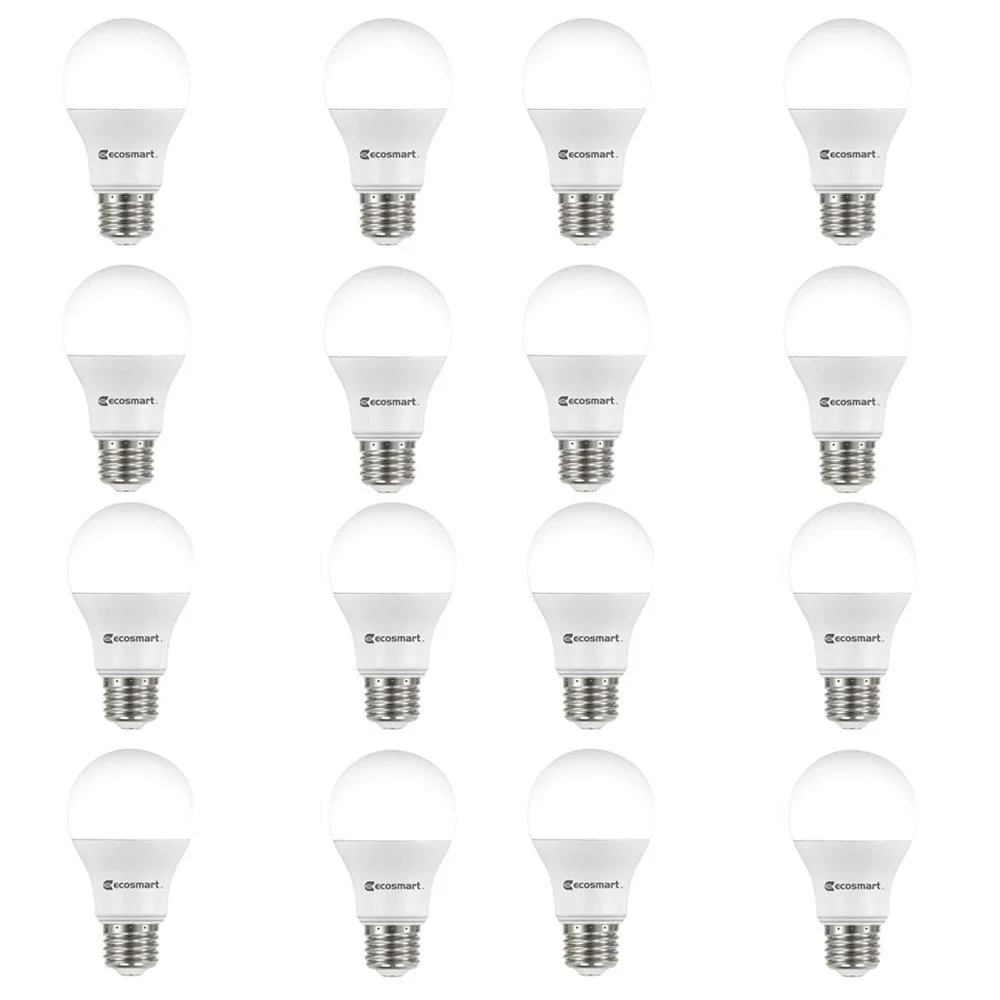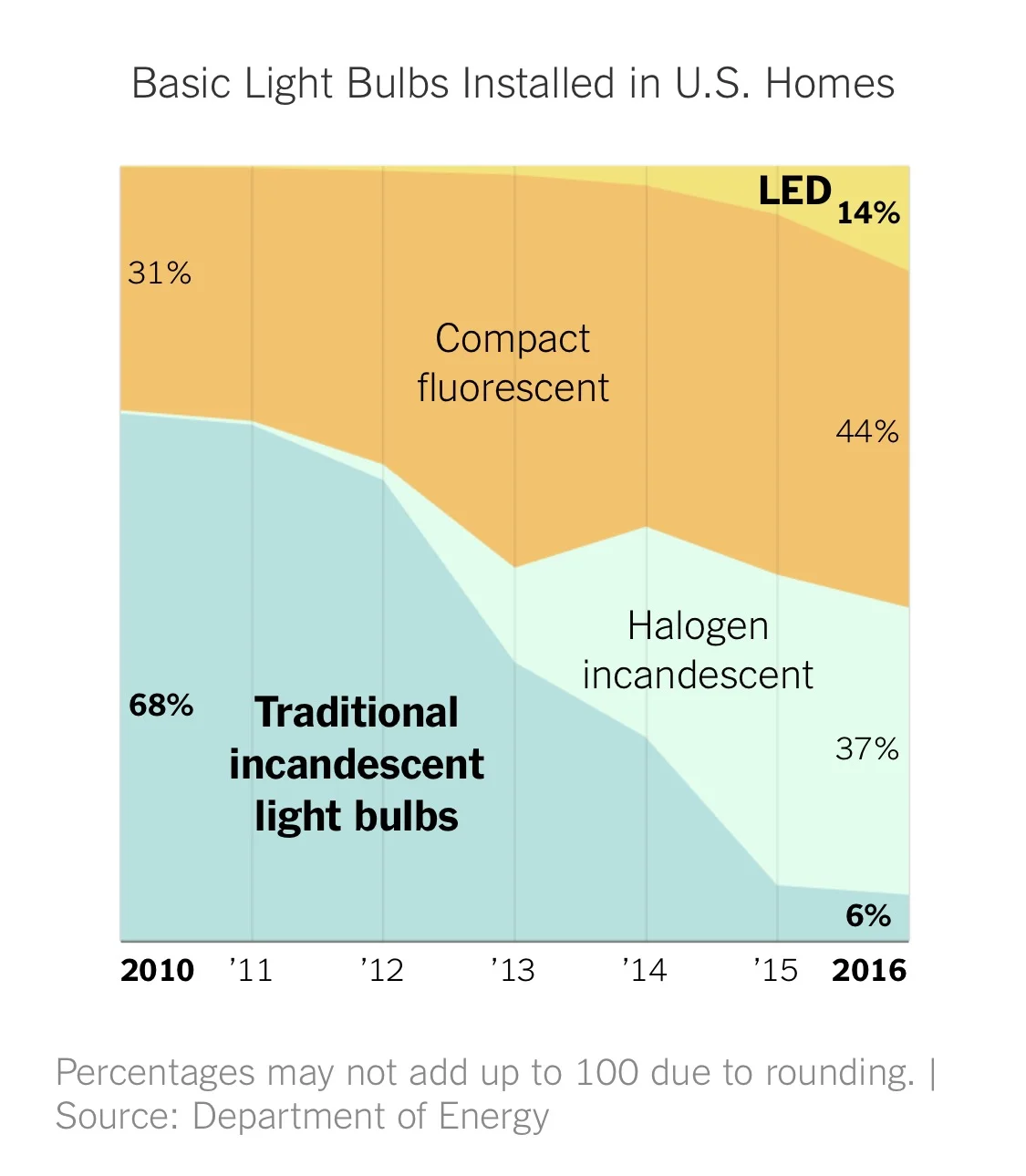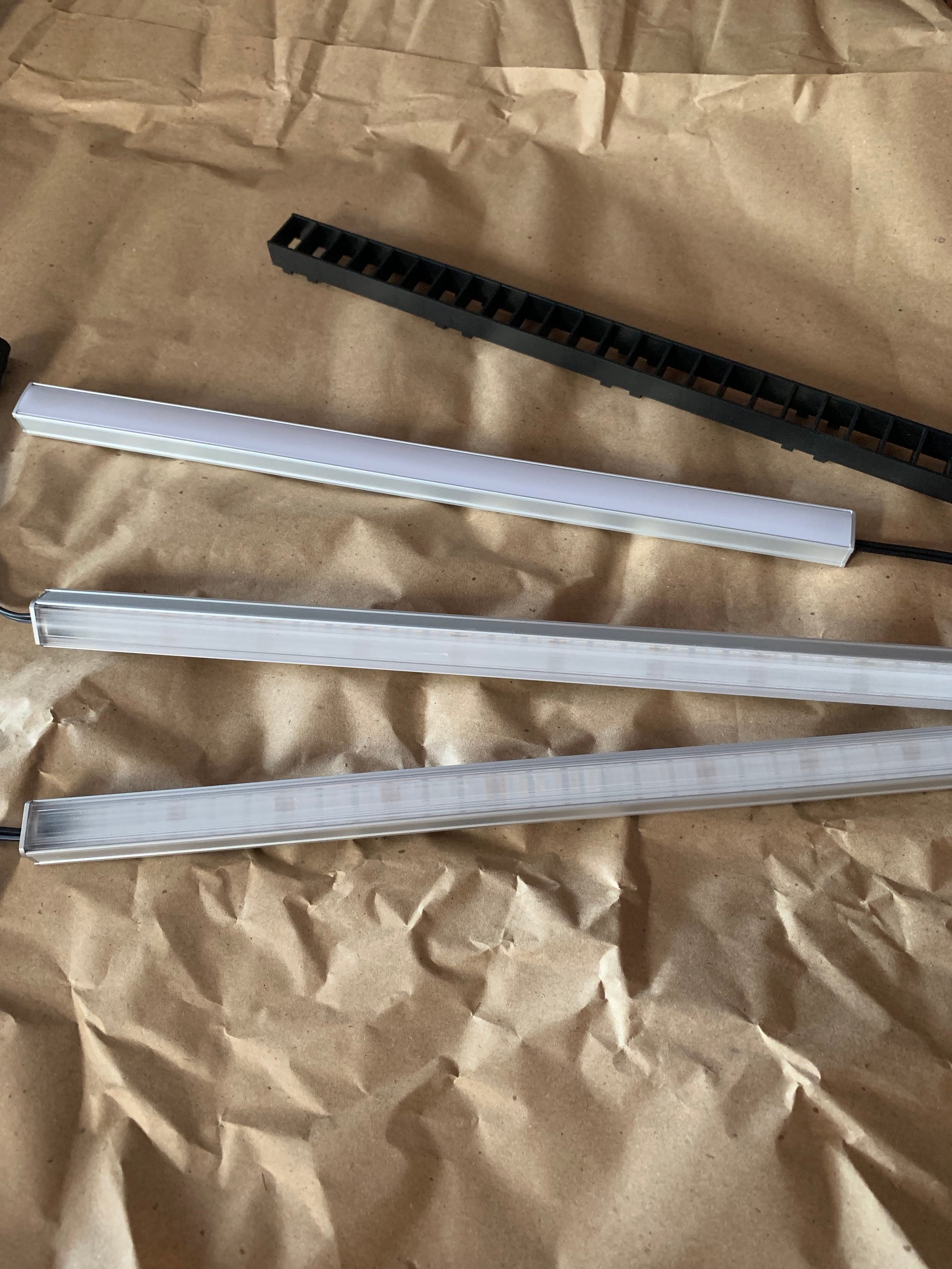The Trump Administration Has Saved the Incandescent Light Bulb - Here's Why It Won't Matter
If you told me we’d still be talking about the incandescent light bulb twelve years after President George W Bush signed the phase out into law, I’d have said you were crazy.
Yet, here we are - from the NY Times:
The proposed changes would eliminate requirements that effectively meant that most light bulbs sold in the United States — not only the familiar, pear-shaped ones , but several other styles as well — must be either LEDs or fluorescent to meet new efficiency standards.
While partisans on the left and the right will make this a pitched battle between personal freedom and environmentalism, the practical effects will be largely nil.
Here’s why.
The Market Has Already Decided
Take a walk through any Home Depot or Lowes and the light bulb aisle is packed with LED options. From the incredibly inexpensive, to connected light bulbs like the Philips Hue line, LEDs have gone mainstream and have become so inexpensive it’s hard to see how much market share incandescent could take back at this point. LED light bulbs are heavily rebated in many markets, making their upfront cost even lower than the initial sticker price. Ofcourse, states like California through JA8 and Title 24 have mandated energy efficient lighting for years. Where light bulbs themselves aren’t legislated ASHRAE and local energy codes will make them a largely impractical choice.
Further to this point all of the major light bulb players have moved away from incandescent production. A walk around Lightfair this year would have shown you what felt like a couple of dozen companies showing LED “filament-style” lamps. In short, the market has moved beyond incandescent.
Incandescent Light Bulbs Never Really Went Away
There have always been ways around the ban/phase out. Certain decorative and service bulbs were always exceptions. Under the Obama adminstration congress defunded the light bulb phase out, taking the teeth out of the legislation for the most part, and yet the incandescent bulb continues to lose market share. But for the designer market, there have always been ways to source incandescent bulbs when you really needed to.
So what’s my take?
Don’t let the partisan chatter upset you. The market is moving whether the laws change or not. LED simply makes too much sense, which is why the trend lines in the above graphic will likely hold. LED bulbs continue to drop in price and improve in quality. What is upsetting is how much of the market will remain dominated by CFL lamps due to their low price and comparable brightness to LED. From a lighting quality point of view, I’d like to see a total standard for common use light bulbs that includes CRI, R9, dimmability, color consistency AND energy efficiency. The technology now exists to make these lighting options an affordable choice.
That’s legislation I could get behind.








